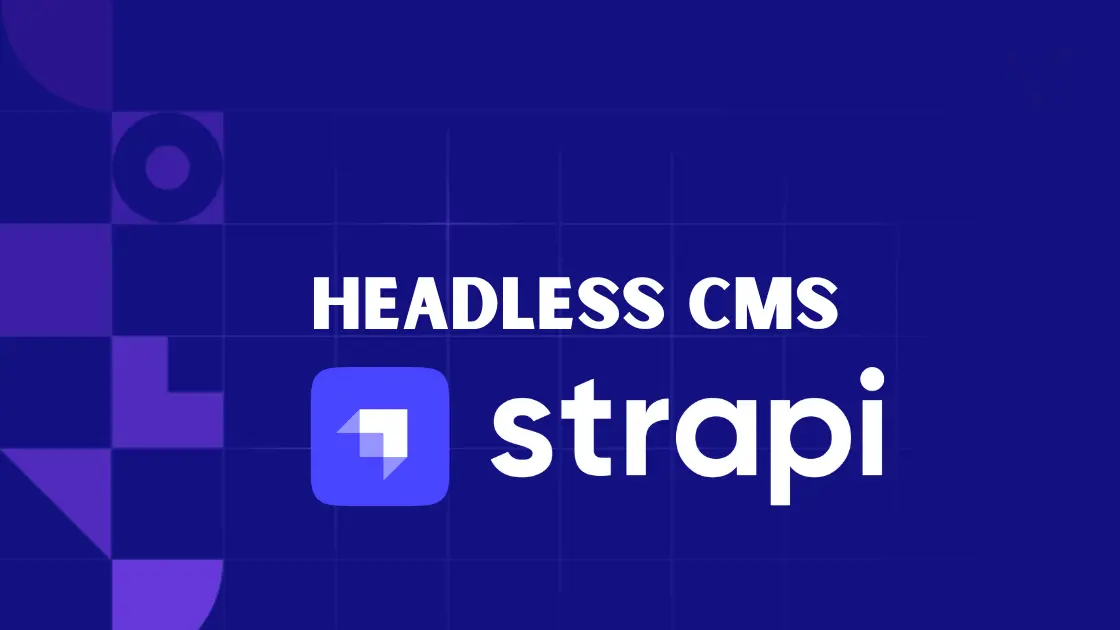What is Strapi CMS?
Strapi CMS is an open-source, self-hosted headless content management system that allows developers to manage and deliver content across various platforms and devices via APIs. Strapi is a Node.js-based solution that offers performance, extensibility, and customization through modern JavaScript.
Unlike traditional CMS platforms, Strapi decouples the content from the front end, giving developers the flexibility to use any technology stack for the frontend while interacting with the CMS through RESTful or GraphQL APIs.
Strapi provides a dynamic, extensible, and easy-to-use platform for managing content, creating custom content types, and integrating with third-party services, all while enabling complete customization and control over the delivery of that content.
Key Features of Strapi Is a Powerful Headless CMS
1. Headless Architecture
Strapi’s headless architecture enables developers to manage content separately from the front-end presentation. Whether you're building a web app or mobile app, Strapi can deliver content to any device via its API, allowing for seamless content delivery and flexibility in your tech stack.
2. Custom Content Types
One of Strapi’s most powerful features is the ability to create custom content types without writing a single line of code. Developers can define fields such as text, images, media files, relationships, and more, which allows content to be structured exactly as needed.
3. API Flexibility
Strapi provides developers with the flexibility to choose between RESTful APIs and GraphQL APIs, depending on their project needs. REST is ideal for simpler, resource-oriented use cases, while GraphQL offers greater efficiency by enabling clients to request only the specific data they need, reducing over-fetching. Strapi eliminates the tedious, manual process of building APIs from scratch by automatically generating APIs that handle standard CRUD (Create, Read, Update, Delete) operations out of the box. This allows developers to focus more on building unique features and crafting better user experiences, rather than managing backend infrastructure.
4. User Permissions & Roles
Strapi offers robust user management features, allowing developers to assign permissions and roles based on different user requirements. This ensures content security, scalability, and the ability to collaborate effectively with teams of different sizes.
5. Built-in Media Library
The integrated media library in Strapi makes it easy to upload, organize, and manage images, videos, and other media files. It also offers image optimization out of the box, improving performance and load times for web applications.
6. Plug-in Ecosystem
Strapi boasts a rich plugin ecosystem that allows developers to extend the platform's functionality. Whether you're adding multilingual support, search functionality, or advanced content workflows, Strapi's marketplace is constantly expanding with community-driven plugins.
How Strapi Transforms the Developer Workflow
Here's how Strapi is revolutionizing content management for developers:
1. Speeding Up Content Delivery
With Strapi’s headless architecture and API-first approach, developers can quickly integrate and fetch content for their applications, drastically reducing the time-to-market for new features and content updates.
2. Seamless Front-End Integration
Strapi’s flexibility means developers can use any front-end framework (React, Vue, Angular, etc.) or static site generator (like Gatsby or Next.js). This separation of concerns between the front-end and back-end allows for more efficient workflows and faster project iteration.
3. Customization at Its Core
Unlike traditional CMS systems, Strapi allows developers to deeply customize their back-end and content management interfaces, making it a perfect fit for projects with unique requirements. You can add custom fields, integrate third-party services, or build completely new functionalities with ease.
4. Security & Performance Out of the Box
Strapi is built with modern security features, including customizable user roles and permissions, preventing unauthorized access to sensitive content. Furthermore, its optimized database interactions and media handling ensure that your app performs efficiently, even at scale.
5. Extensible & Scalable
Whether you’re building a small portfolio website or a complex e-commerce platform, Strapi grows with your project. It can handle a wide range of use cases, from basic content delivery to advanced enterprise-level integrations.
Benefits of Using Strapi for Developers
1. Faster Development Cycles
Strapi allows developers to focus on what they do best: writing code. By taking care of the CMS complexities, Strapi allows teams to develop front-end features, integrate third-party APIs, and deploy projects faster.
2. Reduced Dependency on Back-End Teams
Strapi's intuitive admin panel allows non-developers (such as content editors or marketers) to manage content independently. This reduces the dependency on back-end developers for simple content updates and accelerates the overall workflow.
3. Cost Efficiency
Strapi is open-source and free to use, allowing development teams to avoid the licensing fees associated with proprietary CMS solutions. Moreover, it reduces infrastructure costs by allowing developers to self-host the CMS and control their cloud environments.
4. Consistency Across Multiple Channels
With a headless CMS like Strapi, developers can ensure that the same content is delivered consistently across websites, mobile apps, and any other digital touchpoint, all managed from a single platform.
Strapi CMS in Action: Real-World Applications
Many well-known brands and projects have adopted Strapi to power their content delivery systems. For example, companies in the e-commerce, education, and media sectors use Strapi to streamline content management across multiple platforms. Whether you're working on a single-page app or a multi-site system, Strapi’s flexibility ensures it can meet your needs.
Looking Ahead: The Future of Content Management with Strapi
Strapi is not just another CMS; it’s a paradigm shift in how developers think about content management. As we move into 2025, the demand for flexible, scalable, and customizable CMS solutions will continue to grow. Strapi’s open-source nature, extensibility, and developer-first approach make it a key player in this space.
For developers, embracing Strapi means adopting a platform that simplifies content management, accelerates development cycles, and gives full control over content delivery. With its rapidly growing ecosystem, strong community, and modern architecture, Strapi is positioning itself as a leading tool for building high-performing, content-driven applications.
As content management continues to evolve, Strapi offers the tools developers need to stay ahead of the curve, delivering seamless, scalable digital experiences across the web and beyond.

